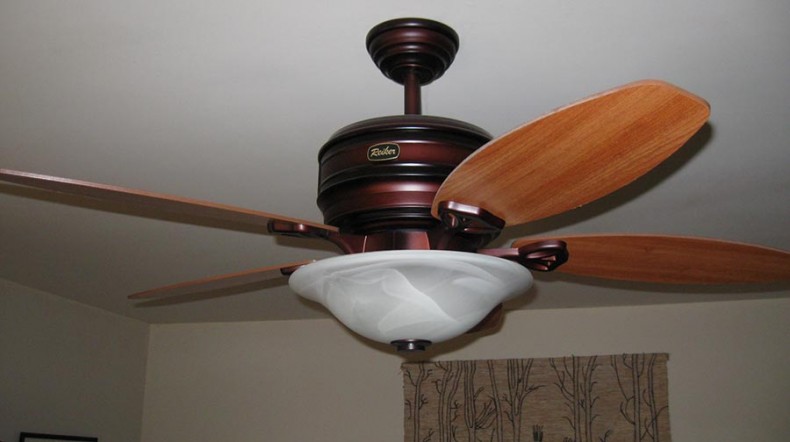Using less A/C
Tips to help you stay comfortably cool this summer
By James DulleyThis ceiling paddle fan creates a comfortable breeze, and it includes heating elements and a thermostat for winter heating.
There are quite a few free, low-cost improvements and simple lifestyle changes you can make to reduce the amount of air conditioning needed for your home. Initially you will likely be a bit less comfortable, but you should become accustomed to the changes soon.
The simplest method to run the air conditioner less is to set your thermostat a few degrees higher. The savings should be from 1 to 3 percent for each degree you raise it.
Other methods to minimize air conditioning are to reduce the amount of heat that leaks into your home, reduce heat generated inside your house, control humidity levels, increase indoor air movement and use natural ventilation when possible.
Most energy efficiency improvements, such as caulking, weather stripping and insulation are made to reduce heat loss during winter, but they can also reduce heat gain during summer. Check your attic’s insulation to make sure there are no voids or thin areas where it may have loosened or blown around, and ensure all attic vents are not blocked by the insulation.
Also consider adding awnings to windows and doors to reduce heat that enters the home.
Cooking, washing and bathing
A great deal of heat is generated from cooking, bathing and running electric appliances, causing the air conditioner to work harder to remove the additional heat. When cooking or bathing, run the range hood or bath exhaust fan to remove extra heat and moisture.
During the summer, try using countertop-cooking appliances, such as a slow cooker, in the garage or outdoors to reduce indoor heat and humidity.
Wash dishes and clothes at night; avoid washing in the afternoons during peak heat. The heat given off from the hot water and electricity used by the motors will stress your air conditioner less at night. This also reduces the peak electricity demand for your electric cooperative.
Keeping air moving
Keeping air moving inside your home increases evaporative cooling from your skin to keep you comfortable at a higher indoor temperature. A ceiling paddle fan is very effective for this. The electric motor in the fan actually heats the room air, so turn it off when the room is unoccupied.
Set the ceiling fan on medium to high speed and the rotation switch so it blows the air downward. During winter, change the switch setting so the air blows upward and set it on slower speed.
On a breezy, not excessively hot day, open some windows. Widely open several windows on the downwind side of your home, and slightly open windows on the windward side. Due to the pressure difference, this causes the air to blow in the partially opened windows much faster, creating a breeze in that area.
A whole-house ventilation fan, often located in a hall ceiling, can draw huge amounts of air through your house. For times when the air is not excessively humid, run the fan at night. It can cool down the entire house.
-
Share this story:



